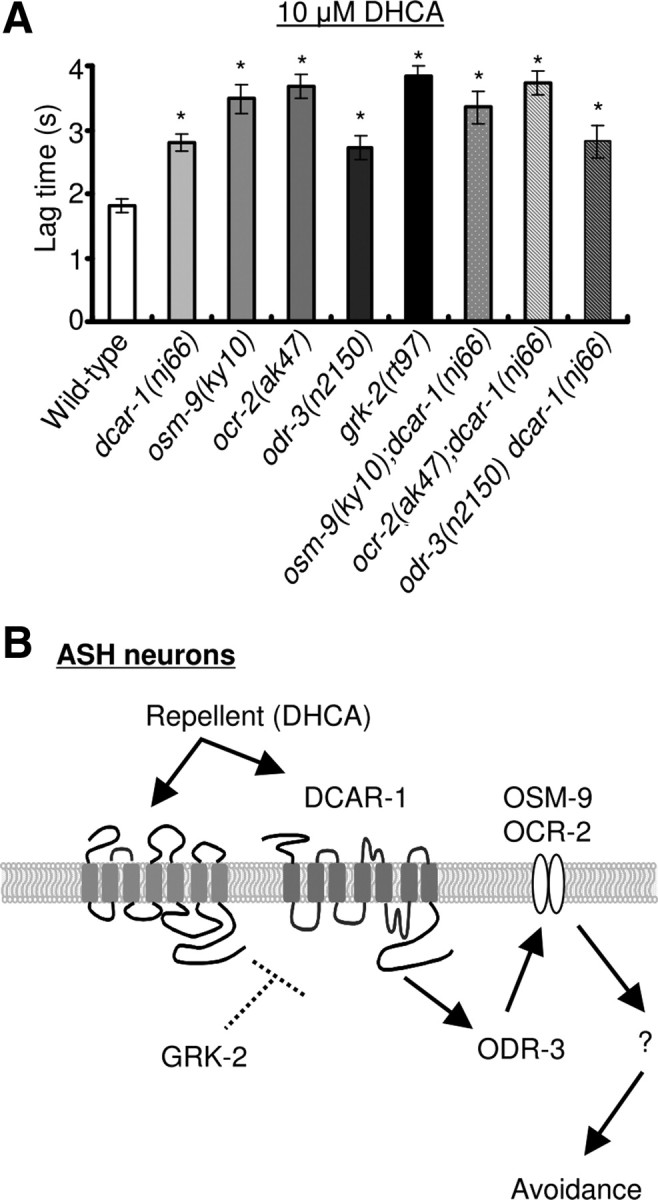Figure 5.

osm-9, ocr-2, and odr-3 mutant animals show defects in avoidance of DHCA. A, Avoidance responses to 10 μm DHCA in osm-9(ky10), ocr-2(ak47), and odr-3(n2150) mutant animals were defective. No significant additive defects were observed between single- and double-mutant animals. Data are shown as mean ± SEM (wild-type, n = 98; dcar-1(nj66), n = 97; osm-9(ky10), n = 20; ocr-2(ak47), n = 20; odr-3(n2150), n = 50; grk-2(rt97), n = 11; osm-9(ky10);dcar-1(nj66), n = 21; ocr-2(ak47);dcar-1(nj66), n = 19; odr-3(n2150) dcar-1(nj66), n = 27). Asterisk indicates significant differences from wild-type animals (*p < 0.01 by one-way ANOVA). B, Sensory signaling model for the avoidance response to DHCA.
